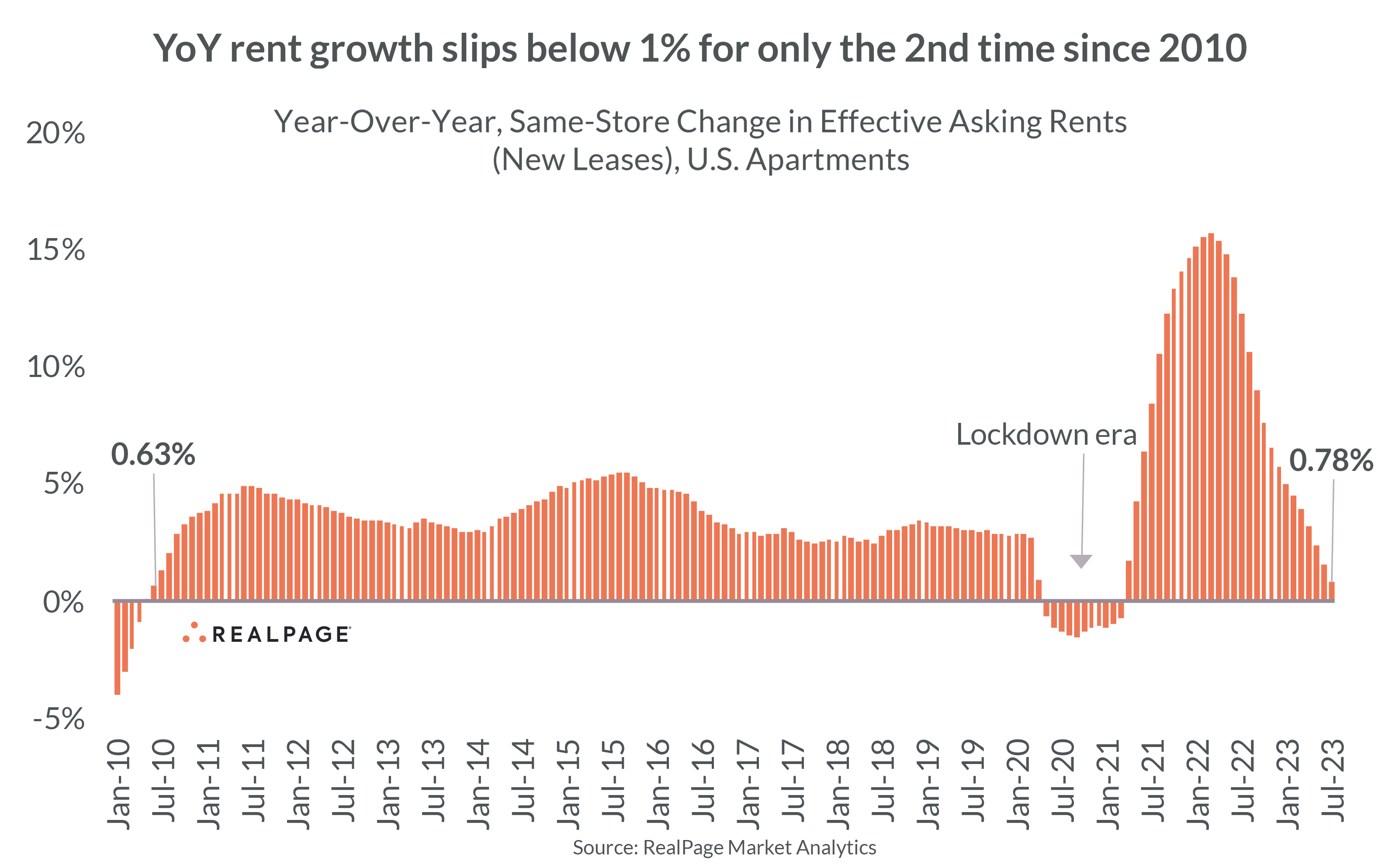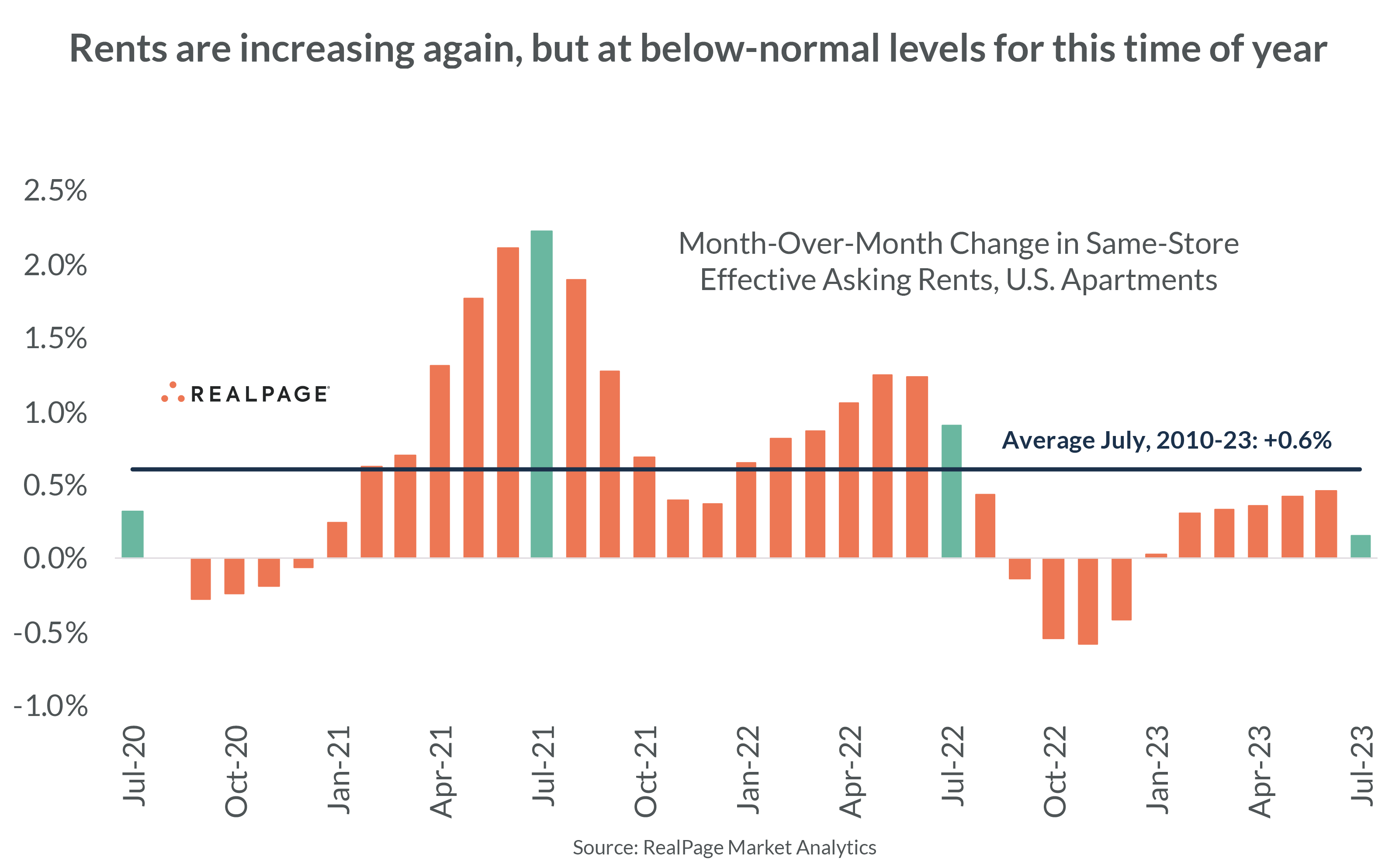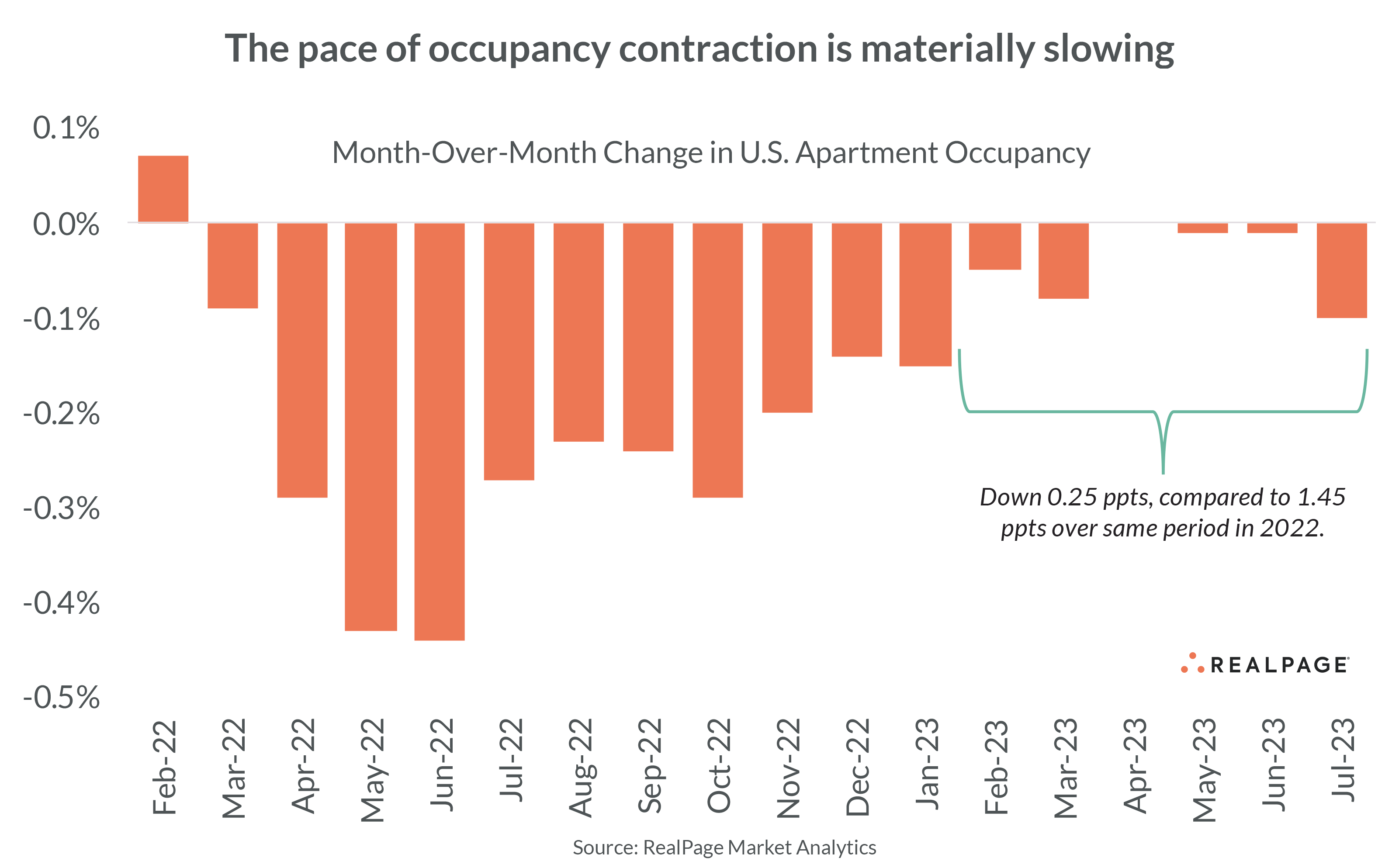As Annual Rent Growth Slips Below 1%, How Much Further Could Rents Cool?

As anticipated, asking rent growth continued to trend downward in the year-ending July – dropping below 1% for only the second time since the Great Financial Crisis and setting up a potential drop into negative territory sometime in the next couple months. But, at the same time, there are some signs that the slope of cooling may soon level off.
Why the rapid cooling? Unlike in past cycles, it’s not a demand issue. We continue to see strong job growth and low unemployment. We continue to see apartment demand bounding back nicely after a weak 2022. But we're also seeing a multi-decade high in new supply. So supply is doing what it's supposed to do – putting downward pressure on pricing.
Here are a few observations from the July data:
1. Year-over-year rent growth is now at 0.78%
As of July, same-store effective rents were up just 0.78% year-over-year, according to data from RealPage Market Analytics. Outside of the 2020 pandemic period, that marked the lowest figure since July 2010. At the same time last year (July 2022), rent growth measured 12.25%.
2. Rent growth is mostly limited to the Midwest and Northeast
Year-over-year rent growth tops 2% in only 15 of the nation's 50 largest markets. Of those 15, all but three are located in the Midwest or Northeast regions. The three exceptions: Virginia Beach, San Diego and Miami. But even those are cooling fast – especially Miami.
Northern New Jersey (Newark) led all major markets with 5.6% year-over-year growth in July. After that, Midwest markets – always the steady eddies – took the next six spots: Cincinnati (5.5%), Indianapolis (4.0%), Chicago (3.8%), St. Louis (3.5%), Milwaukee (3.4%) and Kansas City (3.4%). Not coincidentally, supply is much less a factor in Midwest and Northeast.
Virginia Beach, Boston and New York rounded out the top 10 – all just above 3%. The only other major markets to reach 3% were San Diego and Cleveland.
3. The West Coast is cooling even faster than the Sun Belt
Everyone is talking about the Sun Belt cooldown, but there’s surprisingly less chatter about the West. In the West region, nearly two-thirds of markets (63%) reported year-over-year rent cuts in July. That compares to 32% in the South, 3% in the Midwest and 0% in the Northeast.
Markets newly negative in July include key West Coast metros like Los Angeles, Seattle and San Jose. The big three highest-supply Sun Belt markets (on a relative basis) – Austin, Charlotte and Nashville – have all turned negative, as well.
The biggest cuts among major markets continues to come in Phoenix (-5.0%) and Las Vegas (-4.5%). Only two other markets cut rents by 3% or more: Austin (-3.9%) and Jacksonville (-3.3%). Demand remains solid in these markets, but falls well short of supply reaching multi-decade or all-time peaks.
4. The pace of rent growth’s slowdown should soon level off somewhat
On a month-over-month basis, asking rents have actually risen in every month so far of 2023. And yet year-over-year rent change is cooling quickly because 2023's increases are so far below 2022's. So we're replacing big numbers with smaller numbers in the more closely watched year-over-year calculation.
That math starts to change going forward, as rents dropped much more than seasonal norms between September 2022 to December 2022. That suggests, in turn, the year-over-year change numbers should drop off again in August and maybe September before leveling off (to some degree).
5. Apartment operators are – so far – successfully prioritizing occupancy
The rent trends show that apartment operators continue to prioritize occupancy, given the high-supply environment. That strategy is paying off, as occupancy rates have held stable through the first seven months of 2023 after plunging from record highs back to more normal levels in 2022.
Demand continues to improve in 2023 as inflation has cooled and consumer confidence is rebounding. In fact, the University of Michigan index shows that while consumer sentiment remains relatively weak, it's rebounding from 2022 lows at one of the fastest clips in decades.
As of July, national market-rate apartment occupancy averaged 94.6% – roughly in line with long-term norms. More importantly: The pace of occupancy loss has substantially slowed.
Even with rapidly mounting new supply hitting the market, stabilized occupancy has inched back just 0.25 percentage points since January. By comparison, occupancy over the same period last year plunged 1.45 percentage points.
Aligning with rent growth and supply trends, occupancy rates remain above long-term norms across much of the Midwest and Northeast. At the same time, occupancy has dropped below long-term norms across much of the West and the South. Most notably: Occupancy has fallen around 1.5 percentage points or more below local long-term averages in Salt Lake City, Portland, Oakland and Austin – as well as one Midwest market: Minneapolis/St. Paul.









